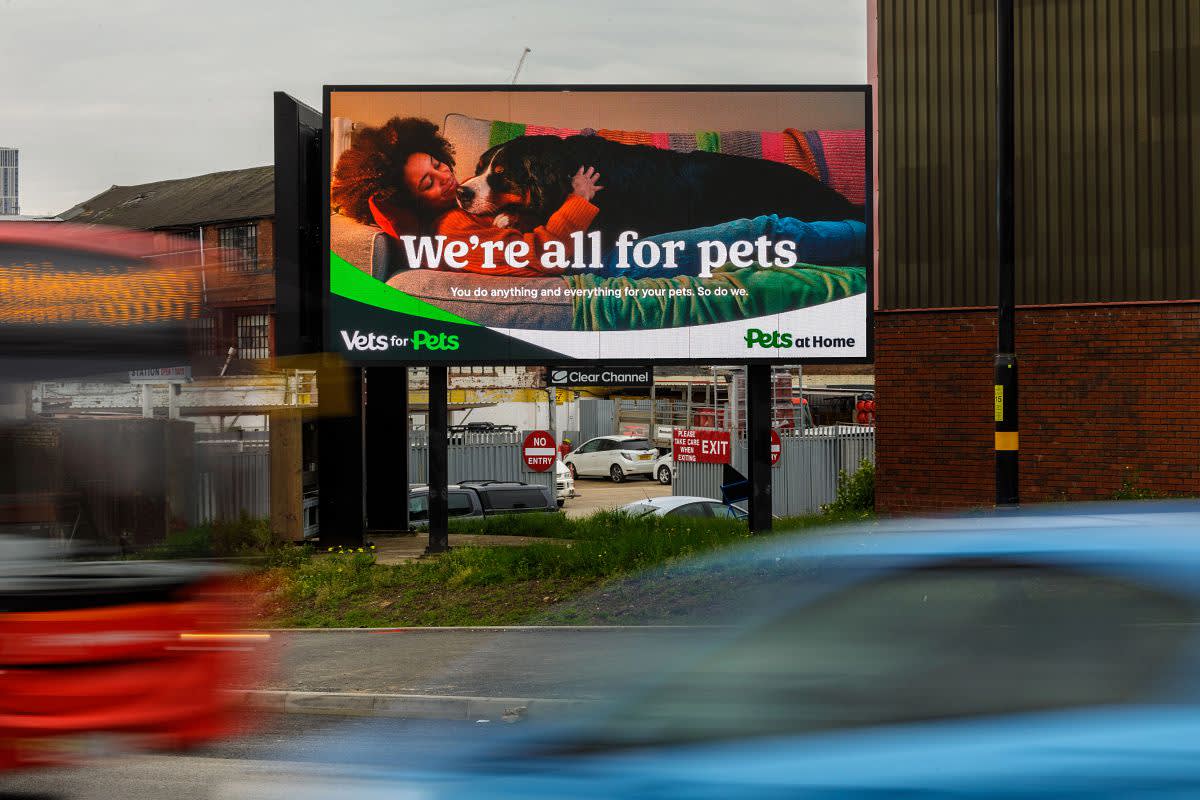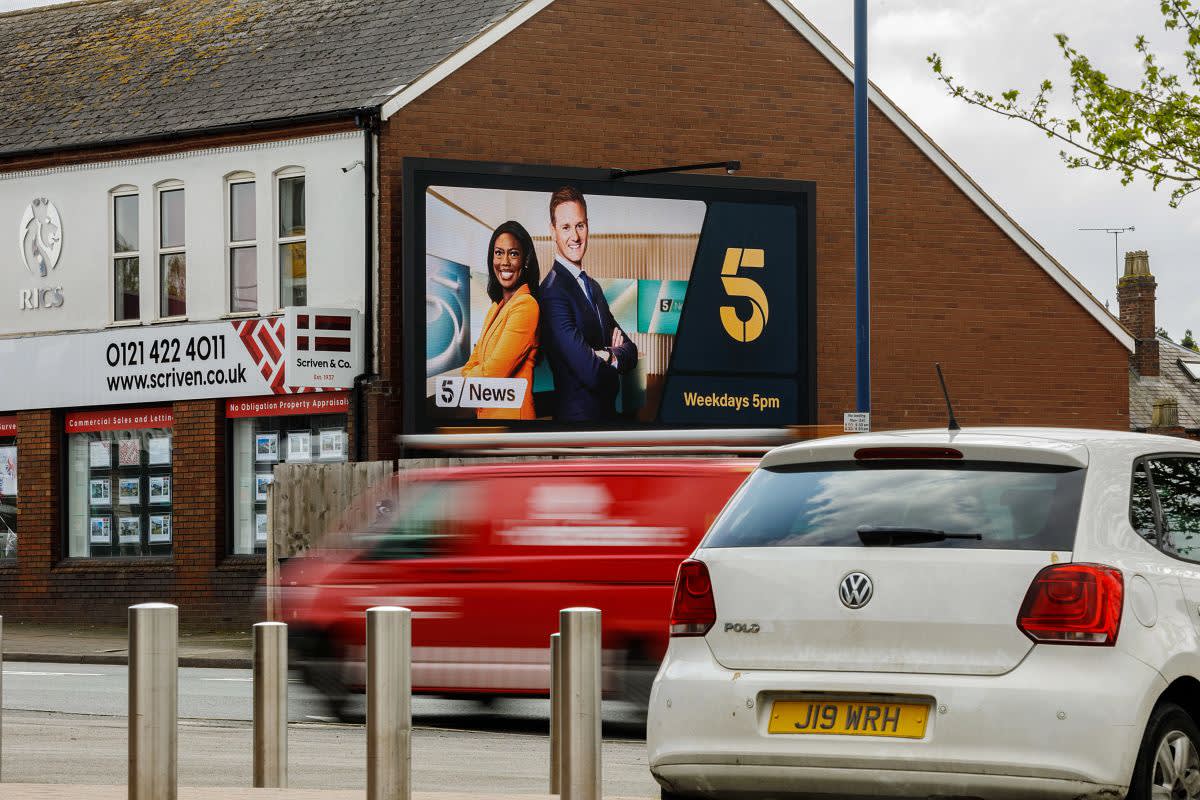Billboards are one of the most familiar forms of OOH advertising. From your daily commute to weekend shopping trips, they’re everywhere – and our extensive network reaches 90% of the UK population fortnightly, according to Route 41 data.
But no two billboards are the same. Billboard dimensions, sizes, and specifications significantly impact effectiveness, alongside factors like location and target audience. Understanding how these elements interact is key to choosing the right billboard size for your digital Out of Home advertising campaign.
Billboards are one of the most familiar forms of Out of Home advertising. From your daily commute to your weekend shopping trip, they’re everywhere – Bauer Media Outdoor's network alone reaches 90% of the UK population fortnightly, according to data from Route 41.
But no two billboards are made equal. Size and shape have a marked impact on any billboard’s effectiveness when paired with other factors like location and intended audience. Understanding how these factors interact is key to choosing the right size billboard for your campaign.
In this guide, we’ll explain how to do just that, as well as laying out the different billboard sizes available.

What is a billboard?
First of all, it’s useful to define what a billboard is: a large advertising board placed in a public space.
Brands of all sizes and from every sector use billboards to highlight their products and services, as well as to reach new audiences.
Billboards are usually placed in hyper-prominent positions, so balancing size with surroundings is pivotal to ensuring optimum results.

What size is a billboard?
In the UK, the standard billboard size is 48-sheets. This is a landscape orientation with dimensions of 3 metres in height by 6 metres in width. However, although 48-sheets are the most common, there are billboards available in lots of other sizes.
At 3 metres by 12 metres, 96-sheet billboards are twice as wide as the standard 48-sheet. This is the largest of the commonly used billboard sizes, but there are some even bigger than this – such as our Storm Cromination which, at 72 metres wide, is the longest billboard in Europe and the ideal Platform for Brands.
In the Out of Home industry, ‘billboard’ is sometimes used as a catch-all term for any poster-style advert found outside the home. For ease of comparison, we’ve included smaller sizes in our list of billboard dimensions below, but it’s worth noting that anything less than 32-sheets is usually considered too small to count as a traditional billboard.
| Billboard size | Height (m) | Width (m) |
|---|---|---|
| 6-sheet | 1.8 | 1.2 |
| 12-sheet | 3 | 1.5 |
| 16-sheet | 3 | 2 |
| 32-sheet | 3 | 4 |
| 48-sheet | 3 | 6 |
| 64-sheet | 3 | 9 |
| 96-sheet | 3 | 12 |

Digital billboard sizes and specifications
Digital billboards provide advertisers with a much greater array of options than static billboards do, such as dynamic visuals or time-of-day triggers. Because of the heightened degree of flexibility with Digital Out of Home, exact specifications tend to be unique to each campaign.
However, digital billboards are often similar in size to traditional billboards, as is the case with our digital 48-sheet, Billboard Live. The key difference is that the content for a digital billboard campaign is usually measured in pixels, as opposed to metres. With Billboard Live, the required dimensions are 864px x 432px.
Additional specifications and features
Dimensions aren’t the only thing that matters when it comes to billboard creation. There are many other specifications, covering everything from the material to the design to the installation. As already mentioned, digital billboards might require specifications for dynamic context triggers and programmatic buying options.
These specs vary depending on the advertiser’s goals and unique campaign parameters. Advertisers also have to abide by any applicable regulations – for example, digital billboards cannot include video content due to the risk of distraction for drivers.

Custom billboards
Custom billboards give brands the opportunity to push their creative limits and stand out from the competition. Bespoke builds enable unusual shapes, 3D features and other eye-catching elements to be introduced – but they also mean that dimensions and specifications are decided during the planning stages and not before.
Generally speaking, it’s not the size of the billboard that has the greatest impact but the targeting. When Out of Home media owners decide which size billboard a location should have, they first and foremost take into account the audience demographics of that area. From here, they consider how the height, direction and size of the billboard can best influence the people who pass it by.
This means that when advertisers lay out their objectives, a large portion of the work is already done. All that brands have to do is define their target audience and then see which billboard formats and locations will help them to achieve their aims in the most productive way.
For brands seeking fame, this might mean making use of 96-sheet billboards placed along high-traffic routes across the country. But if the campaign goal is to activate customers through the purchase of a new food product, opting for smaller roadside billboards on routes to local supermarkets would likely be more effective.
Essentially, bigger isn’t always better. Although some campaigns focused on reaching large and diverse audiences can benefit from billboards that dominate their environment, others require more attention to be paid to the quantity and location of placements.
Get in touch with a member of our team today to discuss which size billboards can help your brand reach its goals.
Start your billboard campaign today
Interested in learning more about billboard advertising? Fill in our form and one of our team will be in contact shortly to answer your questions and get started on your next campaign.




